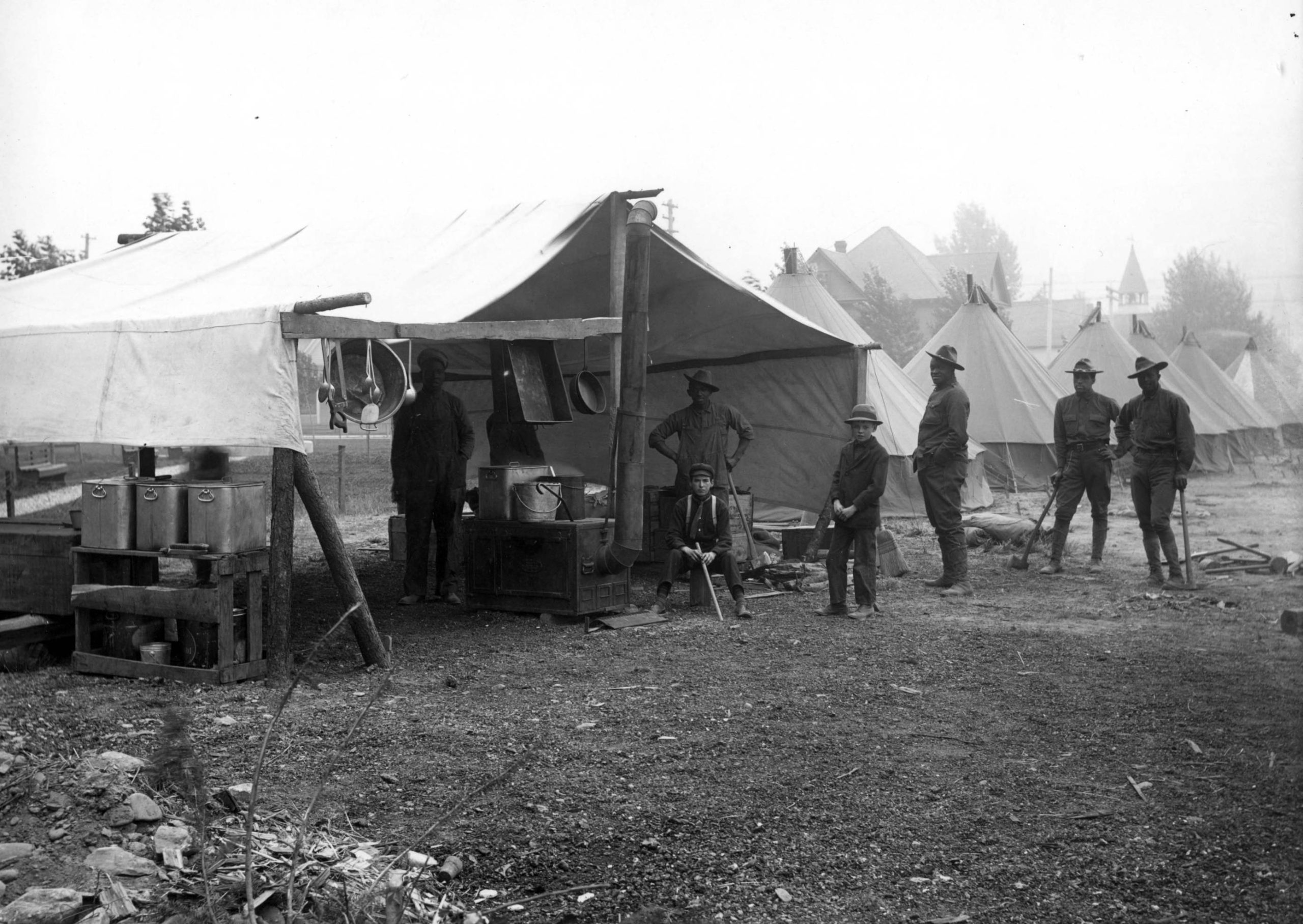9 Buffalo Soldiers and the Big Burn
Buffalo Soldiers and the Big Burn
Marco Seiferle-Valencia
Title: Forest Fire 1910 – Wallace [1910] Soldiers Camp
Date: 1910
Image(s):

Take a few minutes to just look at the image above.
What do you see in the image?
What questions do you have about what you see?
How does this connect to things you already know or are learning about?
Read the article that accompanied the image to learn more…
Source: University of Idaho Digital Collections
Context Given:
“Description: Image shows tents of a Soldiers Camp set up outside of Wallace, Idaho. Forest fire 1910.” This is part of the larger Big Burn Collection, from the website:
“The spring of 1910 was ominously dry throughout Idaho, Washington, and Montana. In the Coeur d’Alene National Forest alone, U.S. Forest Service officials had been battling fires since early April. In July, a rainless electrical storm ignited even more blazes across the Northern Rockies. Bad as it was, conditions got worse.
On August 20, a “Palouser” wind whipped through the forests, creating an inferno now known as the Big Burn. The fires took the lives of nearly 90 people, leveled entire communities, burned almost 3 million acres of timber, and set US Forest Service fire policy for the next 6 decades.”
Expanded Context:
While many Idahoans are familiar with the Big Burn, it’s a lesser-known fact that Black soldiers stationed at Fort Wright in Spokane as part of the 25th Infantry played a key role in saving towns and suppressing and fighting the fire. While this image is not specifically marked as such, this picture likely shows so called “Buffalo Soldiers” from the 25th infantry stationed at Wallace, Idaho. Their heroic efforts saved not only the town of Avery, Idaho but their own lives when they became trapped after evacuating others and had to set a risky backfire to survive. In addition to the harrowing and life-threatening work, the men of the 25th infantry faced discrimination and bigotry, while also ultimately changing the minds and hearts of many Idahoans.
From 97.3KIRO NewsRadio:
“There was plenty of heroism in fighting the 1910 fire, including the exploits of Forest Service Ranger Ed Pulaski, but John MacLean says the Black soldiers from Fort Wright stand out more than a century later for what they faced beyond just the danger from the fire.
“There’s a lot of anecdotal material – quotes from people afterwards – saying, ‘My whole view of the Negro race was entirely changed by these guys,’” MacLean said. “’They were white to the core’ was one of the things said, which is about as backhanded a compliment as you can get, but they meant it in a complimentary way.”
Residents of Avery and others went from being apprehensive to appreciative, MacLean says, expressing sentiments along the lines of “’they may have been Black, but there was no yellow there.’ They were very brave.”
Additional Resources:

